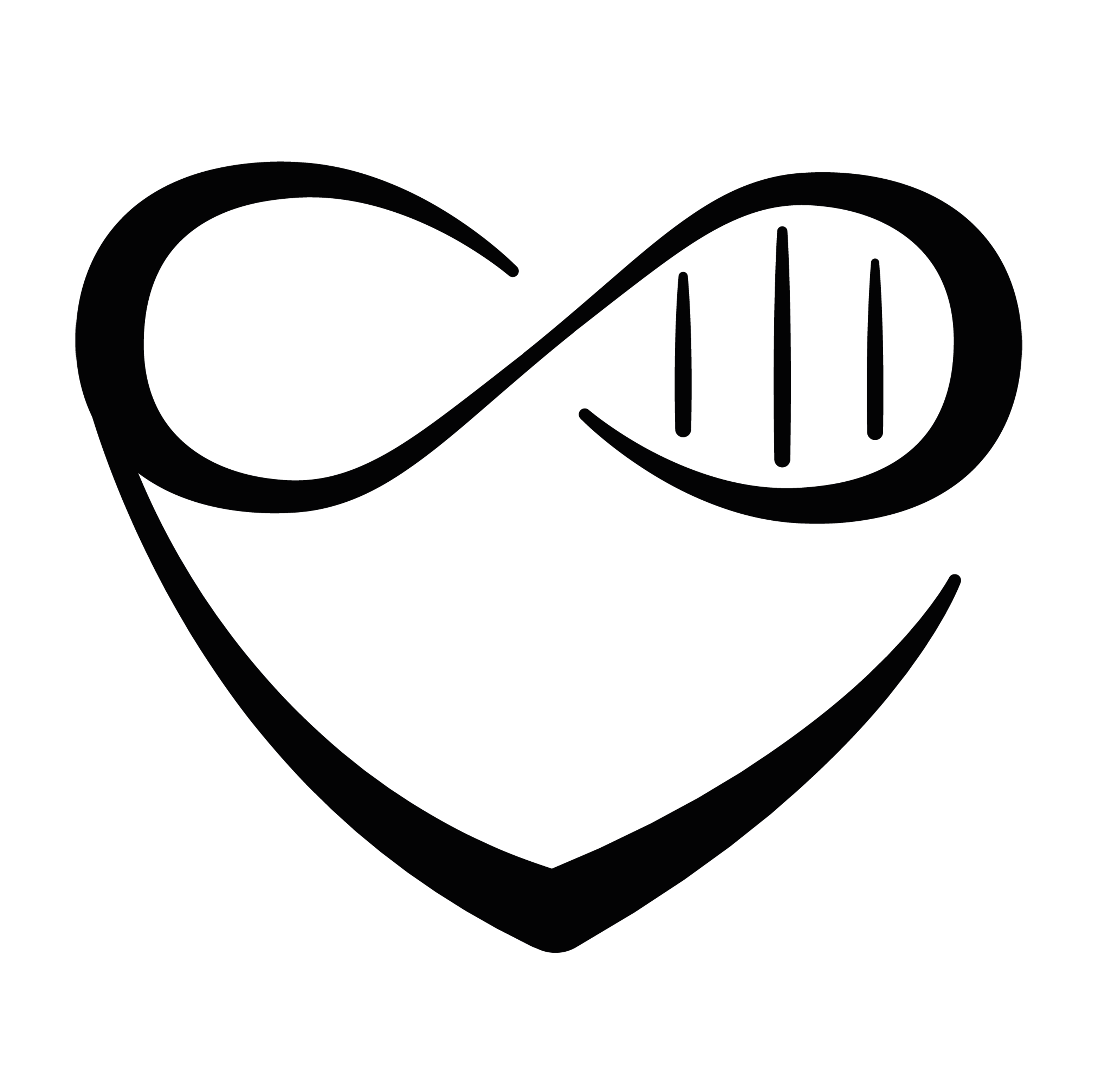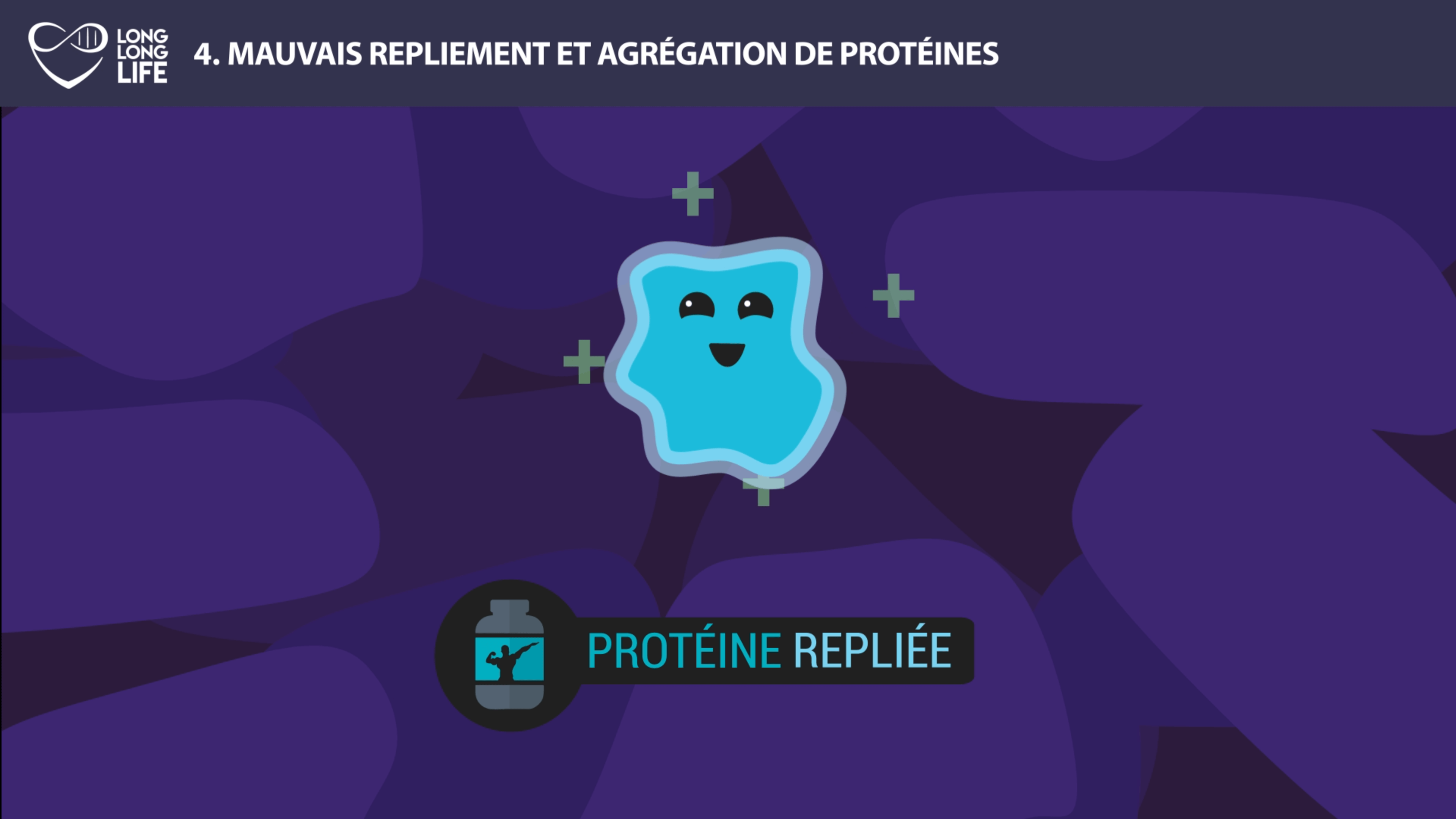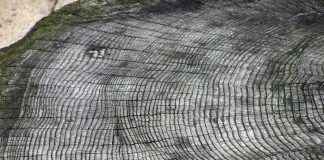[Video] The 9 Causes of Aging, Episode 4, Poorly Folded Proteins – with Dr. Guilhem Velvé Casquillas
We will now discuss a fourth identified cause of aging: protein folding and aggregation.
Proteins : definition
Proteins are the building blocks of your body. Each of the 30,000 genes in your genome is the manufacturing plan for a protein that will have a role of its own.
Proteins work mainly because of their shape. Once folded back on itself in the right way, a protein becomes active and can perform its function correctly.


Protein folding
When protein folding or unfolding is not done properly, it can accumulate and cause disease. In Parkinson’s disease, for example, alpha-synuclein, a small protein found in neurons, is poorly folded and forms aggregates in the ends of neurons. These aggregates eventually block neural communication and cause the symptoms we know.
This accumulation may be due to a poor protein structure, linked to a mutation or chemical reaction, or to the failure of both cell brick recycling systems. For a long time now, the cells of our organism have been putting into practice the principles of the circular economy. These two mechanisms seem to deteriorate with age.
Chaperone proteins
Some proteins (called chaperone proteins) are responsible for helping other proteins to fold, but also for transporting them to the cell’s protein waste if they no longer work. As they age, these chaperone proteins may decrease in efficiency and become less and less able to help other proteins to fold. These proteins lose their activity themselves as they age, creating a vicious circle and thus problems in protein management and an accumulation of poorly folded proteins in your cells.

To summarize, over time, some poorly folded proteins accumulate in the body, pollute it, and interfere with the functioning of our cells, to the point of causing the death of some of them. This dysfunction is found in many diseases associated with aging, such as Alzheimer’s disease or age-related macular degeneration (AMD). Franco-Croatian researcher Miroslav Radman makes it the main primary cause of aging.
Dr Guilhem Velvé Casquillas

Author/Reviewer
Auteur/Relecteur
Physics PhD, CEO NBIC Valley, CEO Long Long Life, CEO Elvesys Microfluidic Innovation Center
More about the Long Long Life team
Docteur en physique, CEO NBIC Valley, CEO Long Long Life, CEO Elvesys Microfluidic Innovation Center
En savoir plus sur l’équipe de Long Long Life



![[Video] The 9 Hallmarks of Aging, Episode 9, Inflammation [FINAL] – with Guilhem Velvé Casquillas PhD](http://www.longlonglife.org/wp-content/uploads/2019/05/Inflammation-Long-Long-Life-longévité-vieillissement-transhumisme-inflammaging-1-218x150.png)
![[Video] The 9 Causes of Aging, Episode 8, Stem Cells – with Dr. Guilhem Velvé Casquillas cellules souches long long life transhumanisme longévité vieillissement arcade](http://www.longlonglife.org/wp-content/uploads/2019/05/cellules-souches-long-long-life-transhumanisme-longévité-vieillissement-arcade-218x150.png)
![[Video] – The 9 Causes of Aging, Episode 7, Senescence – with Dr. Guilhem Velvé Casquillas sénescence long long life longévité transhumanisme vieillissement cellules sénescentes](http://www.longlonglife.org/wp-content/uploads/2019/05/sénescence-long-long-life-longévité-transhumanisme-vieillissement-cellules-sénescentes-1-218x150.png)
![[Video] – The 9 Causes of Aging, Episode 6, Nutrient Detection – with Dr. Guilhem Velvé Casquillas nutriments 1 long long life transhumanisme longévité vieillissement](http://www.longlonglife.org/wp-content/uploads/2019/05/nutriments-1-long-long-life-transhumanisme-longévité-vieillissement-218x150.png)
![[Video] The 9 Hallmarks of Aging, Episode 5, Mitochondria – with Dr. Guilhem Velvé Casquillas mitochondria long long life longevity transhumanism aging free radicals (2)](http://www.longlonglife.org/wp-content/uploads/2019/07/mitochondria-long-long-life-longevity-transhumanism-aging-free-radicals-2-218x150.png)
![[Video] Eurosymposium on Healthy Ageing, Brussels, 2018 Eurosymposium on Healthy Aging](http://www.longlonglife.org/wp-content/uploads/2019/07/P1310252-218x150.jpg)

![[Video] The 9 Hallmarks of Aging, Episode 2, Telomere shortening – Guilhem Velvé Casquillas, PhD Télomère - Long Long Life 9 causes du vieillissement longévité transhumanisme](http://www.longlonglife.org/wp-content/uploads/2019/06/Télomère-Long-Long-Life-9-causes-du-vieillissement-longévité-transhumanisme-1-218x150.png)



![[Video] The 9 Causes of Aging, Episode 8, Stem Cells – with Dr. Guilhem Velvé Casquillas cellules souches long long life transhumanisme longévité vieillissement arcade](http://www.longlonglife.org/wp-content/uploads/2019/05/cellules-souches-long-long-life-transhumanisme-longévité-vieillissement-arcade-324x160.png)